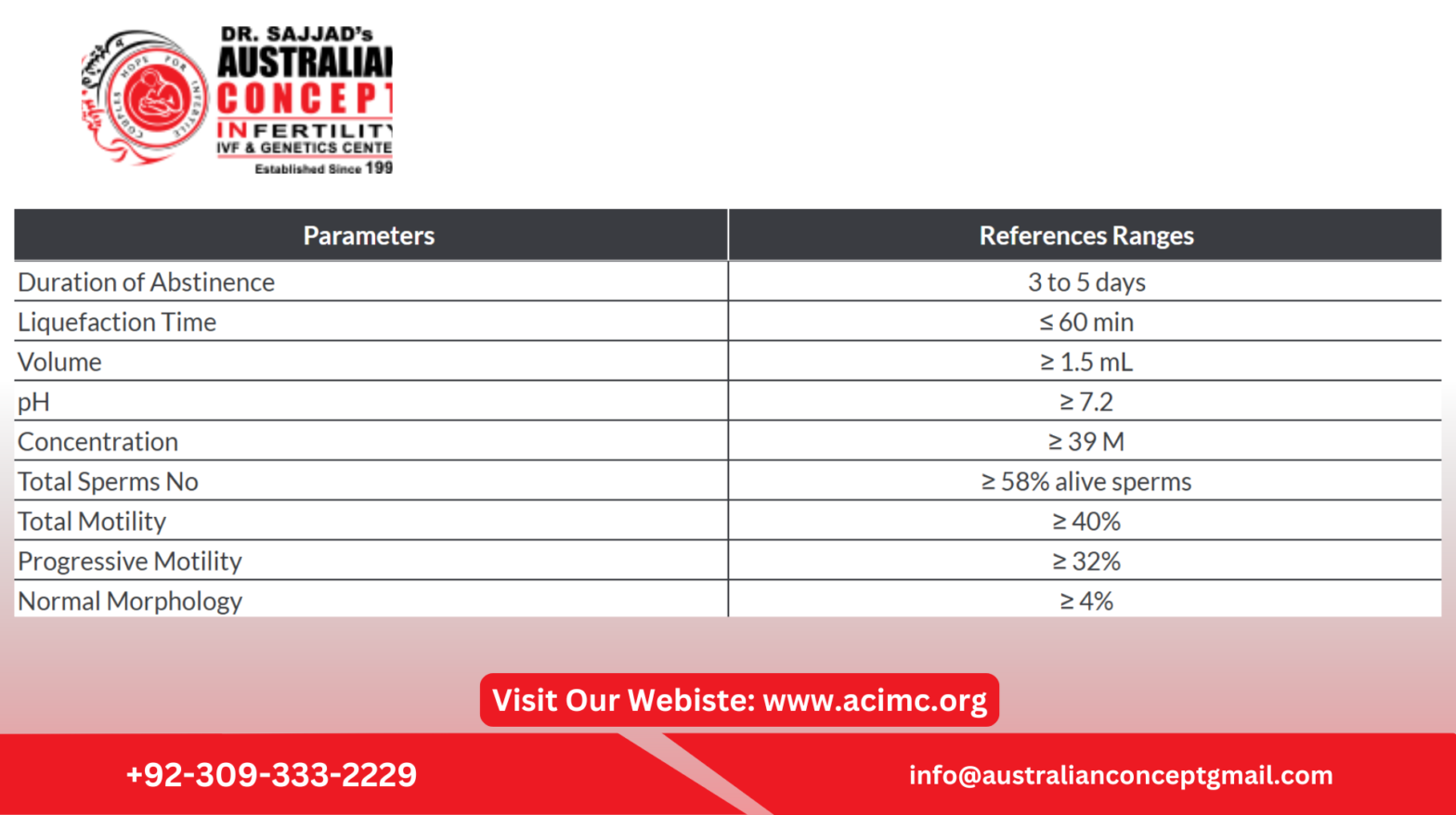A semen analysis is a crucial test used to evaluate male infertility treatment in Pakistan. It assesses various factors of sperm health, including count, motility, morphology, and other parameters. Understanding what constitutes a normal report can help individuals determine their reproductive health status.
Key Components of a Semen Analysis Report
A normal semen analysis report typically includes the following parameters:
- Semen Volume
- Normal Range: 1.5 to 5.0 milliliters per ejaculation
- A lower volume may indicate issues with seminal vesicles or blockages in the reproductive tract.
- Sperm Concentration (Sperm Count)
- Normal Range: 15 million to over 200 million sperm per milliliter
- A count below 15 million may indicate oligospermia, which can affect fertility.
- Sperm Motility (Movement)
- Normal Range: At least 40% of sperm should show forward movement
- Poor motility can make it difficult for sperm to reach and fertilize the egg.
- Sperm Morphology (Shape and Structure)
- Normal Range: At least 4% of sperm should have a normal shape
- Abnormally shaped sperm may struggle to fertilize an egg.
- pH Level
- Normal Range: 7.2 to 8.0
- An abnormal pH level can indicate infections or problems with the seminal vesicles.
- White Blood Cells
- Normal Range: None or very few
- A high presence may indicate an infection or inflammation in the reproductive tract.
- Liquefaction Time
- Normal Range: Within 20 to 30 minutes after ejaculation
- Delayed liquefaction may suggest prostate or seminal vesicle issues.
Interpreting a Normal Semen Analysis Report
If all parameters fall within the normal ranges, the report indicates good sperm health and fertility potential. However, if certain values are abnormal, further medical evaluation may be needed. A fertility specialist may recommend lifestyle changes, medications, or assisted reproductive techniques such as IUI or IVF to enhance the chances of conception.
Conclusion:
A semen analysis normal report provides valuable insights into male fertility health. If you receive abnormal results, consult a fertility specialist for a detailed evaluation and guidance on improving reproductive health. Understanding your semen analysis results can be the first step toward successful conception.

